Founded in 1833, on a farm near Greensboro, Hale County, Alabama. The College was first opened in 1833 as a manual labor institution as a result of the feeling of the Baptists that they needed an institution for the training of indigent young men who felt called to the ministry.
Hale County, Alabama
Six dormitories were built
The school was opened on a tract of land, consisting of 355 acres, which had been purchased from Mr. James Hutchens. The report of the Board of trustees made in 1835 shows that one professor of theology had been appointed and that six dormitories, buildings of one story in height and containing two rooms each, together with a comfortable professor’s home, and dining hall, had been constructed.
Called the Institute of Literature and Industry, the school was opened in 1836, the school was located in the neighborhood of the old Breen place about a mile northeast of the courthouse. The school was largely attended for several years. The pupils were required to do a certain amount of labor in the field or elsewhere each day, for which they were allowed a small sum per hour. A. J. Holcombe was Secretary of the Board of Trustees.
However, the sentiment prevailed in the minds of many of the friends and patrons of the school that the location was unfavorable and the plan of instruction unwise, and as a spirit of unrest caused by the panic of 1837 was prevalent so the State convention, “at an adjourned session in December 1837, ordered the sale of the property to meet an indebtedness of $7,000.00. The balance of $2,000.00 was appropriated to ministerial aid.”
A Second Attempt for the school
Driven by sheer necessity to establish a school to meet the demands of the denomination. The College was moved in 1841 at Marion, Perry County, Alabama when the Siloam Baptist Church acquired land in the town of Marion and invited the Alabama Baptist Convention to rebuild the school there.
The Baptist convention, at its regular annual meeting in Talladega, in November 1841, accepted the report of its committee on education, which recommended the establishment and endowment of a college or university of high character, “”and “that in connection with the said college or university a theological department should be maintained.”
On December 29, 1841, the college was chartered with the following trustees: E. D. King, H. C. Lee, O. G. Eiland, James M. Massey, William N. Wyatt. Walker Reynolds, D. B. Bestor, Ovid C. Eiland, William C. Crane, William P. Chilton, James H. DeVotie, Edward Baptist, Robert J. Ware, L. Y. Tarrant, and Langston Goree.
The new school was named Howard College in honor of John Howard, known for his work in prison reform in England. Among the charter trustees in 1841 was lawyer William Parish Chilton of Talladega.
Howard College, Perry County, Alabama 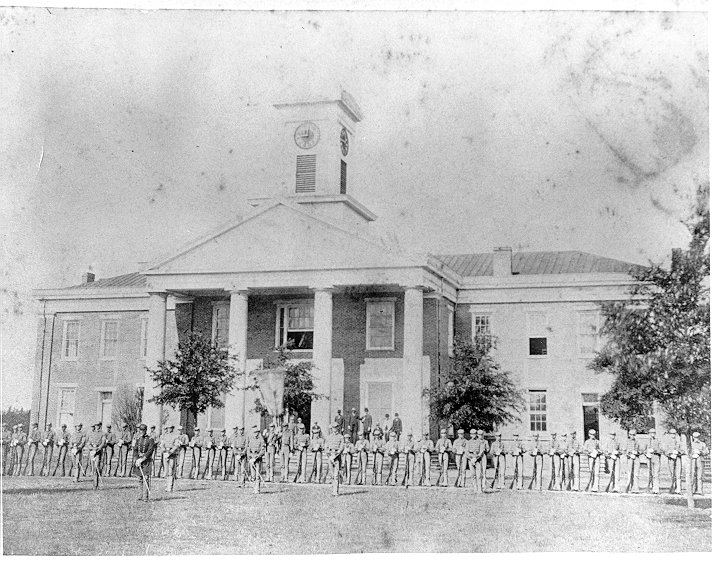
New school was opened in January 1842.
The school was opened in January 1842, with 9 small boys as pupils. By the close of the session in June 1842, the attendance had increased to 31 students, and S. S. Sherman, “a graduate of Bowdoin College and more recently a student at Tuscaloosa, was president and sole teacher.”
During the second session, the faculty was enlarged by the addition of Revs. Solon Lindsey and A. A, Connella. A plan for raising an endowment of $20,000.00 for the chair of theology was formulated and presented to the convention in 1842. With the approval of the plan, Rev. J. H. De Votie was appointed financial agent.
In 1843 the treasurer reports to the trustees that he “has received of the Rev. D. P. Bestor, cash and bonds to the amount of $1,744.29, making the entire permanent theological fund $19,403.69.”
College was destroyed by fire
On May 10, 1844, the College was destroyed by fire which fortunately occurred about midday, and the students were assisted by the citizens of Marion in removing the library and apparatus. Only the frailer parts of the apparatus were injured. Although the destruction of the buildings interfered with the raising of the endowment fund, it did not cause a suspension or discontinuation of the exercises of the school. The Baptist Church and several other buildings were secured and there the work of instruction was carried on under Dr. Sherman and his assistants.
Citizens of Perry County help rebuild
Due to the great liberality of the people of Perry County new lands were purchased, and a new building was erected in October 1846. This new edifice cost around $13,000.00 and contained offices, laboratories, recitation rooms, and a dormitory for students. A complete curriculum was adopted, a full faculty organized, and the exercises continued in the new buildings.
The first class was graduated in 1848. Year after year since that time men have gone forth, some to carry the gospel to the ends of the earth, others to take places in positions of honor and distinction, both in church and state.
College buildings were destroyed again by fire in 1854
The years between the graduation of the first class in 1848 and the destruction of the college buildings a second time in 1854, were years of growth and progress. The institution lost the services of its guiding hand during the years of its infancy, for Professor Sherman realizing that he had performed his duty to the college, resigned his position as president in 1851 to take up a school of his own.
Dr. Henry Talbird was elected as his successor and during his administration, the endowment fund for the theological department and the school proper was increased. In 1853 the amount of endowment had reached $50,000.00, and many of its supporters believed that it could be raised to $100,000.00, and though many appeals were sent out the fund was never completed.
The first fire which had destroyed the school buildings occurred at midday, and the second fire which destroyed practically all the property of the College, and caused numerous injuries among the students occurred at midnight. The lives of many of the students were saved by the negro janitor, Harry, who was one of Dr. Talbird’s slaves, and there is a beautiful monument to his memory in the cemetery at Marion.
Monument to Harry, a slave who died saving the lives of several students during a fire at Howard taken ca. 1930 (Alabama Department of Archives and History)
Howard College continued with new construction
The studies were immediately resumed, and for a second time, the Baptist Church was laid under tribute. Soon three new buildings were under construction, upon a more extensive plan and on a suitable lot given by Dr. J. P. Baron, a member of the first graduating class.
The chapel, or main edifice, containing society halls, a laboratory, library and offices was completed at an estimated cost of $45,000.00. Two dormitories, one on the north and one on the south, facing each other were also constructed. The buildings were entered in 1858, and exercises were resumed in them during that year.
Scholarship system initiated to raise the endowment fund
It is interesting to see the numerous ways in which the trustees tried to raise the endowment fund of the College. One of the most interesting plans was that of the scholarship system. $500.00 entitled the giver to a permanent scholarship; any minister who subscribed $250.00 was entitled to a permanent scholarship; and any person or persons who subscribed $100.00 was entitled to the tuition of any particular individual through the regular college course of four years.
This system proved an excellent means of raising money, but it worked well for only a short time. In 1857 the people began to fall short of the payment of the interest due, and also in the payment of their notes. The trustees requested the holders who failed to pay for the scholarships to give them up, which was in many cases done. The most munificent contributor to the endowment was Jere H. Brown, Esq., of Sumter County, who endowed a professorship of theology with $25,000.00, and in addition, assumed the support of 25 indigent young theological students.
Students resigned to enter the service of the Confederacy
The institution had just begun to get on its feet again having its new buildings, enlarged faculty, increased attendance, and promised endowment, when the greatest stroke of misfortune came in the declaring of war between the States and the secession of Alabama from the Union.
In the excitement which followed the secession of the State, President Talbird, two members of the faculty, and over 40 of the students resigned to enter the service of the Confederacy. The cherished endowment which in 1860, together with the property of the College amounted to $264,499.80, soon vanished.
Buildings were used as a hospital but college continued
A part was later redeemed in Confederate money, but the remainder was never redeemed. College exercises were continued under the supervision of Prof. A. B. Goodhue and D. B. Sherman, the remaining students being too young to go to the war. During the years 1863 to 1865, the buildings were used as a hospital for Confederate soldiers.
Instruction was given to many of the wounded and disabled while detained there, and the work was very pleasant to those engaged in it. Professor Goodhue, together with his son B. P. Goodhue, who had been detailed from the military service at the instance of Col. Henry Talbird were the instructors.
Though the work of the College was greatly crippled during the war, its exercises however were at no time discontinued. In 1861, it graduated eight men, in 1862, two men, in 1863, two men, in 1866, one man, and in 1867, three men.
Endowment vanished but college continued
As the endowment had been destroyed by reason of the war it was found necessary to abandon the scholarship system upon which the endowment had been based and to depend entirely upon tuition to meet current expenses. The College was re-opened in 1865 with the following faculty: A. B. Goodhue, E. G. Thornton and D. P. Bestor. Col. Talbird refused to accept the presidency and after the meeting of the convention in 1865, Dr. J. L. M. Curry accepted the position.
On the 28th of February, 1867, in his official position as president of Howard College, Dr. Curry wrote to Mr. Robert C. Winthrop, attempting to secure some of the Peabody donation for the College. The gift, however, was not made.
Dr. Curry was succeeded as president by Prof. E. G. Thornton who served during 1868-69, and he in turn by Rev. Samuel R, Teeman, 1869-71. Col. J. T. Murfree of the faculty of the University of Alabama was secured in 1871 and served as president for 16 years.
College was moved to Birmingham
Acting on a report of the committee on education the Baptists of Alabama decided to remove the institution to the young and flourishing city of Birmingham and accepted an offer that had been made to the convention at Union Springs in 1887 by the East Lake Land Company.
Old Main”, an administrative building on the East Lake campus of Howard College in Birmingham ca. 1940 (Alabama Department of Archives and History)
Building on the East Lake campus of Howard College in Birmingham, Alabama ca. 1910 – This was formerly the East Lake Atheneum for females, later became an orphans home. (Alabama Department of Archives and History)
Upon the arrival of the faculty and students in Birmingham, however, it was found that the values of the lands had been greatly exaggerated and that the people of Birmingham were not as wholeheartedly in sympathy with the movement as was thought, and it was with the greatest difficulty that $8,000.00 could be raised for the erection of two temporary wooden buildings for the housing of the school by October 1st of that year.
The college also ran Howard College Academy as a preparatory school at the time.
Col. Murfree refused to leave
Many were in favor of returning to Marion, but Col. J. T. Murfree, who had refused to leave Marion to go to Birmingham, had leased the buildings and had begun the sessions of Marion Military Institute, which still exists today.
In 1888, Dr. B. F. Riley was elected president and immediately set about to raise the number of students. Rev. D. I. Purser in 1889 succeeded Dr. Shaffer as financial agent and secured $32,000.00 in notes for the erection of a permanent building.
College students in front of Old Main on the East Lake campus of Howard College in Birmingham, Alabama ca. 1953
In June 1892, Howard College celebrated its semi-centennial when addresses were delivered by Rev. J. B. Hawthorne, Gen. George D. Johnston, Prof. D. G. Lyon, and others. The debt of the institution in 1896 was $20,000.00. The faculty, however, came to the rescue and was successful in the main agreement of affairs, and through the labors of B. D. Gray, A. C. Davidson, F. M. Roof, and D. L. Lewis, the entire debt of Howard College was paid in full on July 14, 1899.
Dr. A. P. Montague was elected president in the fall of 1902 and served in that capacity until August 1912, when he was succeeded by Dr. James M. Shelburne.
Howard College admitted women in 1895
Howard College was really placed upon a substantial basis in 1896, when the general education board of New York agreed to give to the institution the sum of $25,000.00 provided the Baptists of the State would raise the sum of $75,000.00 as an endowment.
Renfroe Hall, a dormitory on the East Lake campus of Howard College in Birmingham, Alabama ca. 1910 (Alabama Department of Archives and History)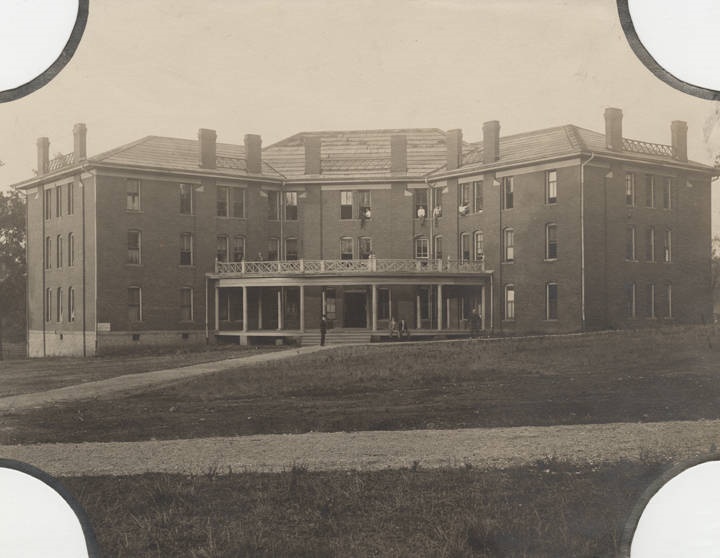
The College admitted women as early as 1895 and was officially made co-educational in 1913. Fifteen young women were matriculated. In 1916-17, a department of journalism was installed with Jasper C. Hutto as instructor.
The College contained 15 schools, and departments by 1921.
College Honors awarded
Gold medals were awarded for declamations in the Sophomore and Junior classes. Mr. Milner offered a medal for music. A gold medal was awarded by a Mr. Smith to the student who made the best marks in mathematics. Dr. J. Leslie Davis offered annually $100.00 in gold as the awards for the students making the highest mark in the lower classes in English. Scholarships included; Bryan scholarship; United Daughters of Confederacy scholarship; trustees’ scholarship; federation of women’s club’s scholarship.
Howard College 1896, Eastlake, Birmingham, Alabama
Degrees offered
By the early 1920s, the College awarded bachelor and master of arts degrees in the colleges of arts and sciences. The school established its Teacher Education Division in 1914. In 1920 the school joined the Southern Association of Colleges. In 1927 it added its pharmacy school.
Science Hall on the East Lake campus of Howard College in Birmingham, Alabama ca. 1940 (Alabama Department of Archives and History)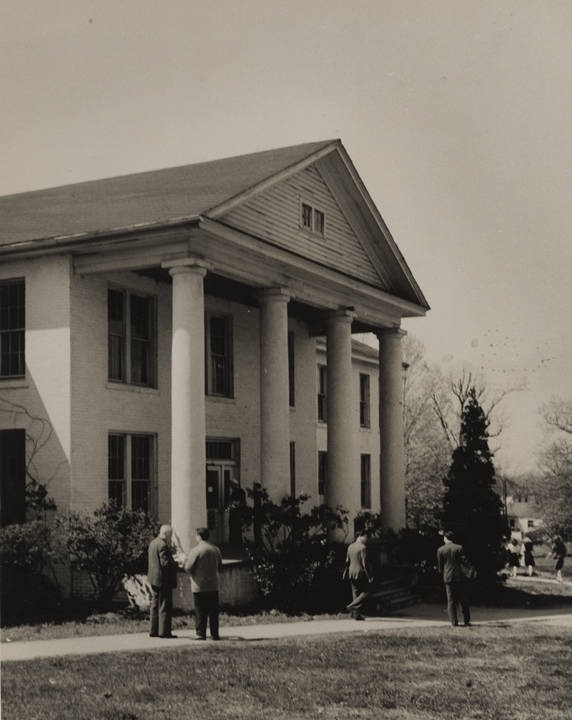
There were two literary societies known as the Franklin and Philomathic. The theological students formed themselves into a divinity club.
Riley Hall on the East Lake campus of Howard College in Birmingham, Alabama ca. 1940 – housed the departments of English, Economics, Languages and history (Alabama Department of Archives and History)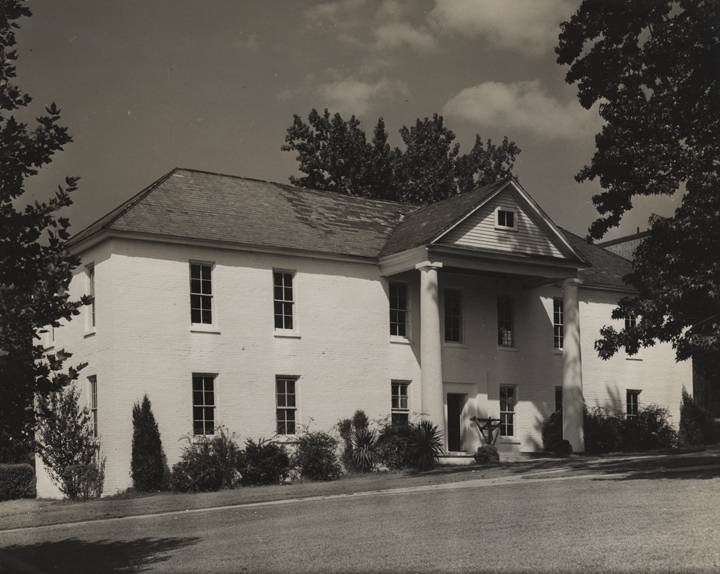
Other groups included: A young men’s Christian association and a young women’s Christian association; the Howard Crimson Board; Volunteer Band; Glee Club; and athletic teams receive the enthusiastic support of the student body.
Two national college fraternities, the Sigma Nu, Iota Chapter, established in 1875, and Pi Kappa Alpha in 1911, together with Psi Delta, a local, organized in 1900, are maintained.
The Library
After the collapse of the manual training institute at Greensboro, the library and remains of the apparatus were left there, it being the hope of the convention that the institution would be revived.
The convention of 1842 which reestablished the institute as Howard College ordered the books and apparatus turned over to the trustees of Howard College for removal to Marion. The following is a report on the subject which was made by the Board in 1843 (Proceedings, 1843, p. 10):
“The library, which the convention directed the trustees to transfer from Greensboro to Marion, has been placed in the institution. It contained 324 volumes of miscellaneous works—making the total number now belonging to the Howard College library about 1,000. It is still receiving occasional additions through the liberality of friends, but contains very few books of theological character.”
The meeting of the board of education in 1843 directed the Rev. J. L. Dagg to transfer the books purchased by him for the convention to the college library. Dr. S. S. Sherman when he first came to Marion saw the need of a library and made a house to house canvass for books. Many of the citizens of the town contributed books and some gave money, believing that it would be quite an honor to be recorded as a donor to Howard’s library.
Montague Hall on the East Lake campus of Howard College in Birmingham, Alabama ca. 1910 The library initially occupied one room of Montague Hall at the East Lake campus. (Alabama Department of Archives and History)
Very little damage was done to the library by either of the two fires. The books rendered great service to the wounded soldiers who were quartered in the buildings during the war of secession.
When the school was removed from Marion to East Lake the library numbered about 6,000 volumes. By the 1920s, it numbered between 10,000 and 15,000 volumes, and each of the societies had a library of its own.
Aerial view of Howard college in Birmingham ca. 1940 (Alabama Department of Archives and History)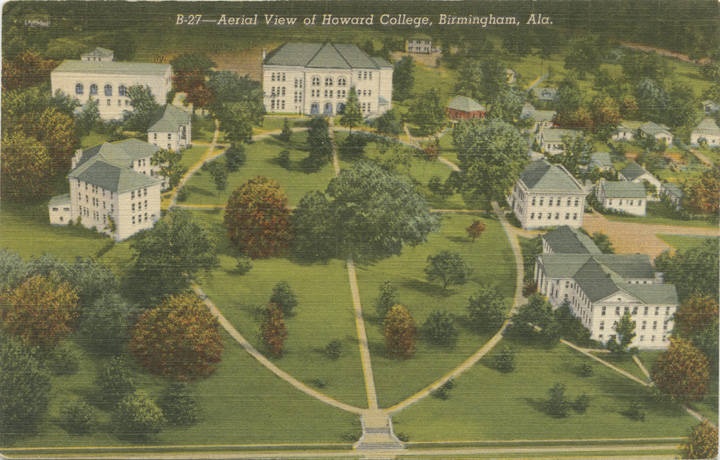
Trustees
The following is a list of the trustees to the early 1900s arranged alphabetically as far as it has been able to compile them.
- Apsey, J. G., 1869-1883; resigned and succeeded by W. F. Davis; was Secretary 1875-1881.
- Bailey, Judge J. F., Marion, 1853-1880; resigned in 1880.
- Bailey, T. M., 1879-1885; resigned at end of term on account of removal from State.
- Baptist, Edward, of Marengo County, charter member 1841.
- Barron, T. J. or J. T., Marion, 1853-1871.
- Bartow, W. S., 1865-1872; resigned and succeeded in 1872 by W. N. Reeves.
- Bestor, Daniel P., then of Greensboro, charter member, 1841-1853; died in 1869 at Mobile.
- Blllingslea, C., 1850-1853.
- Billingslea, J., 1853.
- Billingsley, I., 1855-1869.
- Blunt, E. A., 1862-1875.
- Brown, J. H.. 1859-1869.
- Bush, T. G., Birmingham, Ala., 1883-1899.
- Chilton, William Parrish, Montgomery, charter member, 1841; was a member from 1850 until his death, Jan. 20, 1871.
- Cleveland, Rev. Dr. W. C, of Dallas County, 1875-1887.
- Cocke, J. F., of Perry County, 1845-1857.
- Crane, William C., Montgomery, charter member, 1841.
- Crenshaw, J. W., 1861-1879; 1883-1889.
- Crumpton, W. B., Montgomery, 18851891.
- Davis, W. F., 1881-1887.
- De Votie, James H., Marion, charter member, 1841; 1845-1846; 1850-1856; president, 1845; served on Board until he left for Columbus, Ga., in 1856.
- Eiland, Ovid C., 1841, charter member.
- Eiland, O. G., 1841, charter member.
- Fagan, Enoch, 1845-1869.
- Fiquet, W. H., 1879.
- Fowlkes, S. H., 1865-1867.
- Frost, J. M., 1881-1887.
- Gamble, John, 1871-1877.
- Garrett, G. W., 1853; president, 1853; possibly same as T. W. Garrott.
- Garrott, Isham Warren, of Marion, 1855-
1863; president, 1855, 1857, 1863; killed at Vicksburg in 1863. - Gordon, D., 1859-1869.
- Goree, Langston, 1859-1869, charter member, 1841-1846.
- Gwaltney, L. R., 1879.
- Gwin, D. W., 1871-1877.
- Hand, M. W., 1870-1889.
- Haralson, Jonathan, Selma and Montgomery, 1869-1887.
- Henderson, Rev. Dr. Samuel, Tuskegee, 1861-1891.
- Hendon, W. T., of Marion, 1872-1891; succeeded by B. Jones.
- Holman, W. P., 1859-1860.
- Hornbuckle, W., 1845-1852; secretary, 1846-1850.
- Huckabee, C. C 1870-1889.
- Huckabee, J. G., 1859-1867.
- Inzer, J. W. Ashville, 1883-1889.
- Jones, B., 1867-1872, resigned in 1872; succeeded by W. T. Hendon.
- King, Edwin Davis, Marion, charter member, -1862; president of 1st board, 1841; president, 1844, 1846, 1850, 1856, 1862; died in 1862.
- King, Judge Porter, of Marion, 1869-1887.
- Lane, Laban B., of Marengo County, 1845-1871.
- Lawler, Levi W., 1859-1885.
- Lea, H. C., charter member, 1841-1844; secretary, 1841-1844.
- Lea, R. H., 1865-1867.
- Lee, J. H., 1862-1870; resigned in 1870, though name continues to appear until 1887.
- Lide, Robert P., 1859-1865; treasurer, 1864-1865. Died in 1865.
- Lockhart, John, Marion, 1845-1846.
- Lovelace, Jesse B., Marion, 1859-1886; secretary, 1860-1879; treasurer, 1883-1889; president, 1885-1886; succeeded by Dr. W. W. Wilkerson as president in 1885; resigned in 1886.
- McCraw, Rev. A. G., 1845-1860.
- McIntosh, W. H., 1857-1875; president, 1860; president pro tem, 1863; 1865-1869.
- Manly, Rev. Dr. Charles, 1869-1871; resigned in 1871 on removal from the State.
- Mason, W. W., 1845-1867.
- Massey, James M., charter member, 1841.
- Miller, T. P., Mobile, 1859-1871; succeeded by John Gamble.
- Modawell, W. B., of Marion, 1867-1879.
- Moore, Judge John, of Marion, 1861-1870; resigned in 1870 but name appears in 1879.
- Murfee, Col. James Thomas, Marion, 1879.
- Newman, J. M., of Macon County, 1860-1871.
- Orr, John C., 1871-1877.
- Revves, W. N., 1871-1891; succeeded by W. S. Barton.
- Renfroe, Rev. Dr. J. J. D., of Talladega. 1875-1887.
- Reynolds, Walker, Talladega (?), charter member 1841.
- Seals, D. M., 1877-1885.
- Shackelford, Rev. Dr. Josephus, of Trin ity, 1873-1891.
- Shivers, Dr. O. L., of Marion, 1850-1861,
- Shorter, Gov. John Gill, of Eufala, 1845-1877.
- Stone, L. M., of Carrollton, 1869-1887.
- Sterrett, R. H., Selma and Birmingham, 1881-1887.
- Sumner, M. T., 1867-1879.
- Talbird, Col. Henry, of Marion, 1845- 1871.
- Tarrant, Larkin Young, of Marion, charter member, 1841.
- Teague, Rev. Dr. E. B., of Columbiana, 1869-1889.
- Travis, A., 1845-1846.
- Vaiden, I. B., 1879.
- Van Hoose. E. Y., 1859.
- Waldrop, Rev. A. J., of Ruhama, 1875-1887.
- Waldrop, Prof. R. J., of Birmingham, 1885-1891.
- Ward, William Columbus, of Selma and Birmingham, 1879-1891.
- Ware, Robert J., charter member, 1841.
- Watts, Gov. Thomas H., Montgomery, 1859-1871; succeeded by Rev. W. C. Cleveland.
- Wharton, Rev. Dr. M. B., 1881-1887.
- Wilkerson, Dr. W. W., Marion, 1870-1889; president, 1871-1877; 1877-1883; 1883-1885. It is assume that he was president from 1871-1885. He was president 13 (thirteen) continuous years; succeeded by J.B. Lovelace, 1885.
- Wilks. W., 1871-1889.
- Winkler, E. T., 1875-1889.
- Woodfln, Rev. Dr. A. B., 1871-1877.
- Wyatt, J. L., 1879-1891.
- Wyatt, Wm. N., Marion, charter member, 1841-1867; president pro tem, 1861-1862.
Presidents to 1912
- 1842-52—S. S. Sherman.
- 1852-65—Henry Talbird.
- 1865-8—J. L. M. Curry.
- 1868-9—E. G. Thornton.
- 1869-71—Samuel R. Freeman.
- 1871-87—James T. Murfee.
- 1887-8—J. T. Dill, LL. D.
- 1888-93—B. F. Riley, LL. D.
- 1893-6—A. W. McGaha.
- 1896-7—A. D. Smith.
- 1897-1902—F. M. Roof, D. D.
- 1902-12—A. P. Montague, LL. D.
- 1912 James M. Shelburne, D. D., LL. D.
Howard College moved again
Under the leadership of President Harwell Goodwin Davis, the college was again relocated. On June 11, 1953, Howard College broke ground on its third campus in the Shades Valley just south of Birmingham. The school occupied its new campus in 1957.
In 1965 Howard reinstituted its master’s degree program. This led to the college’s elevation to university status on November 9, 1965. The school was renamed in honor of Frank Park Samford, chairman of the Board of Trustees and up to that time, the institution’s most generous individual benefactor.
In 1961, the school acquired the Cumberland School of Law from Cumberland University in Lebanon, Tennessee. The Ida V. Moffett School of Nursing, owned by the Baptist Medical Center of Birmingham, was added to the University in 1973. In 1988, the Beeson Divinity School was established through donations from Ralph W. Beeson.
Cumberland School of Law at Samford University
Today, Samford University is a private, coeducational university, located in Homewood, a suburb of Birmingham, Alabama, United States. It is still affiliated with the Alabama Baptist Convention, it includes the Howard College of Arts and Sciences, Cumberland School of Law, McWhorter School of Pharmacy, Brock School of Business, Ida V. Moffett School of Nursing, Orlean Bullard Beeson School of Education and Beeson Divinity School.
In the 2014 report, Samford was ranked 3rd in Southern Regional Universities by U.S. News & World Report.


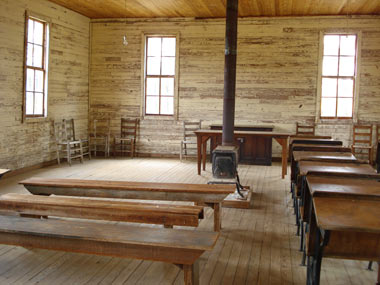
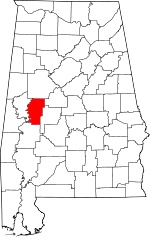
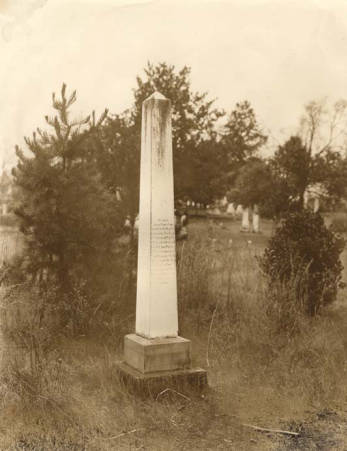
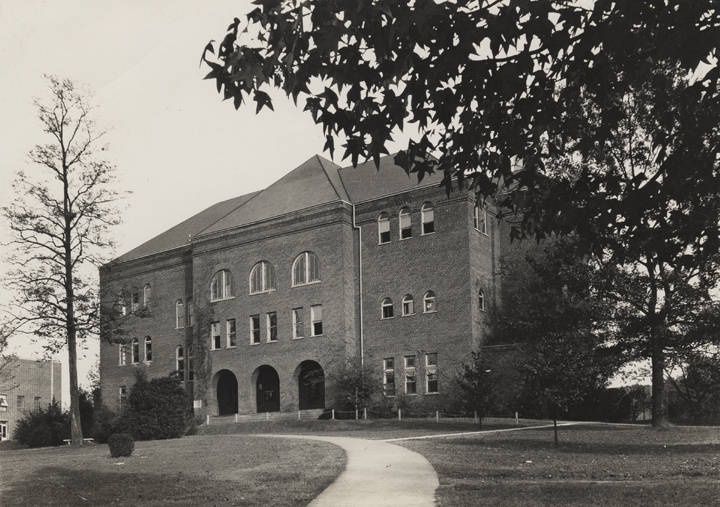
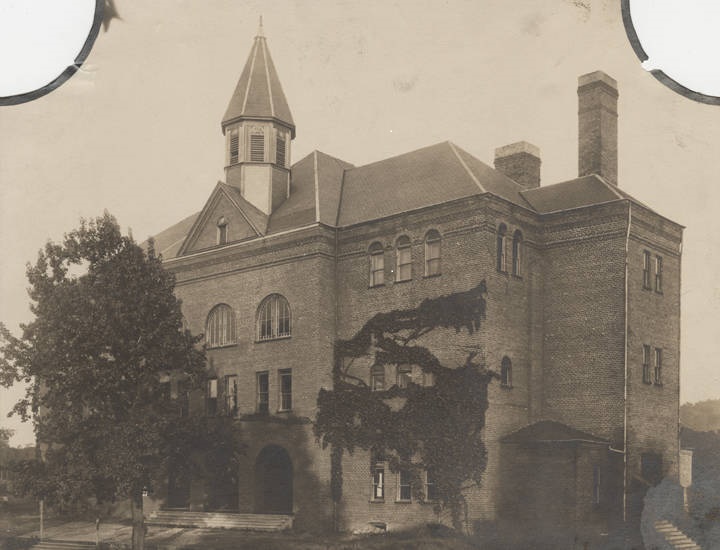
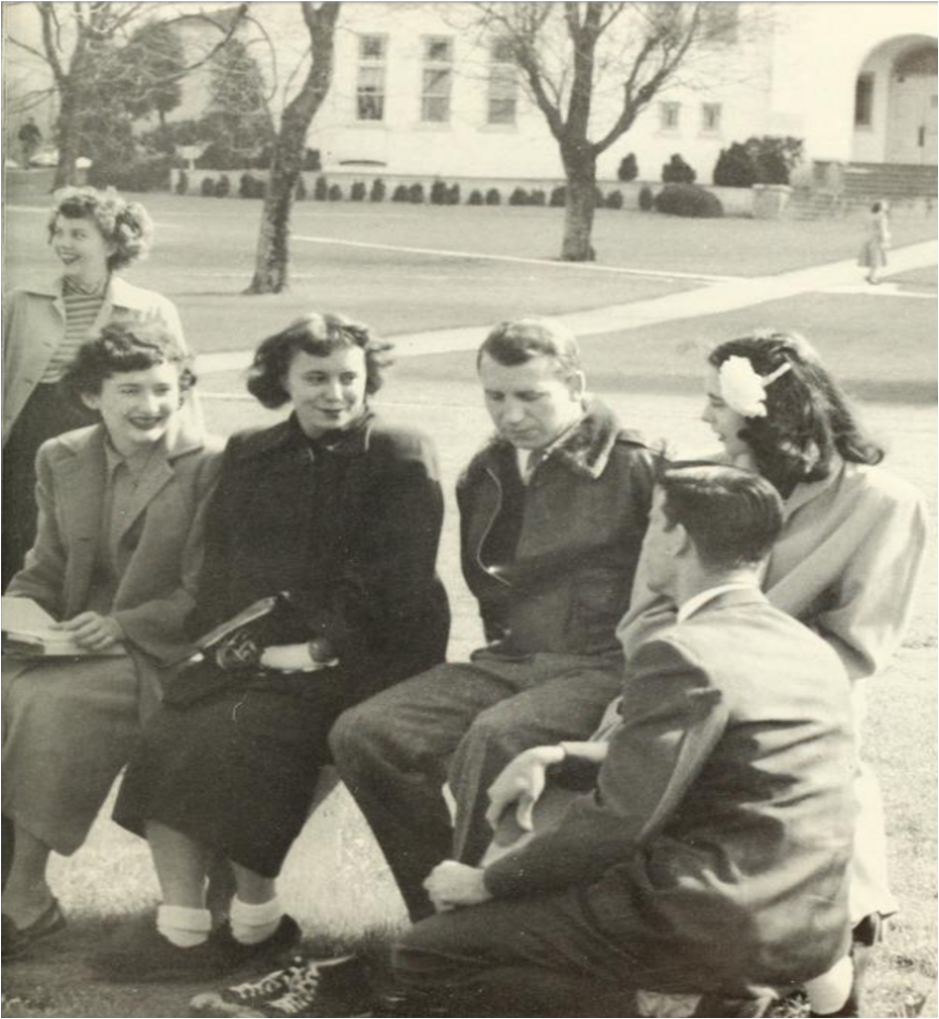
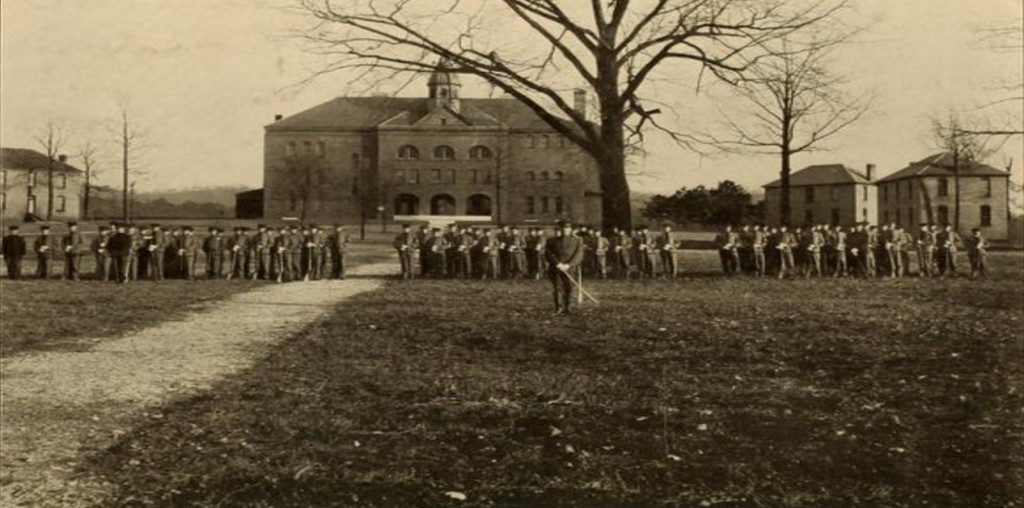
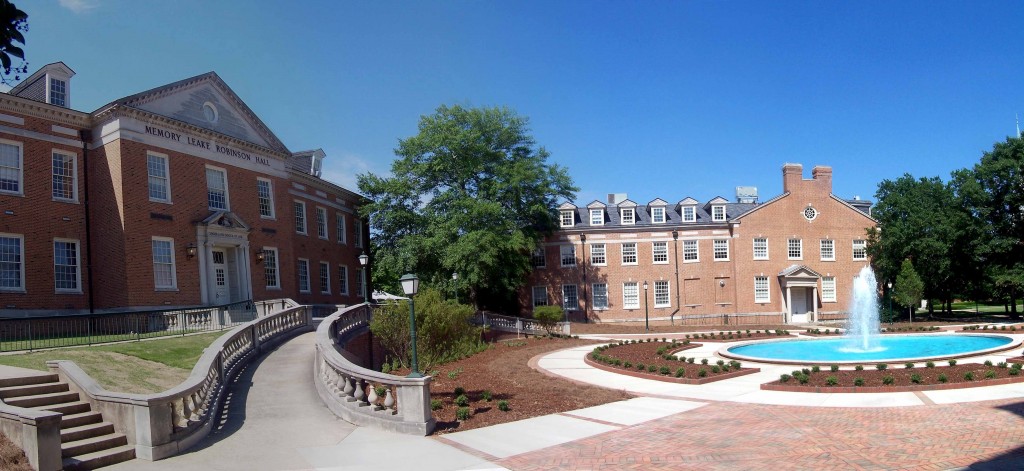


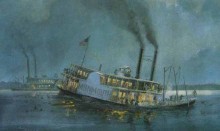
The Marion Campus is still Marion Military Institute. For correct information about MMI go to their website or FB Mmi Archivist.
[…] pastoral students from Howard College would come to Romulus to fill in for our preachers who came twice a month. Mama would invite them […]
[…] 1871 he became President of Howard College which was then located at Marion but later removed to Birmingham. In 1887 he founded the Marion […]
Interesting read!
Yes, without even reading. My wife and I are both graduates.
Margaret McGough
Delphine McKenzie
Samford.
thank you for these posts…. learn something almost every day
Markus Snowden
Yes Samford
Fred Grissom
[…] Howard College […]